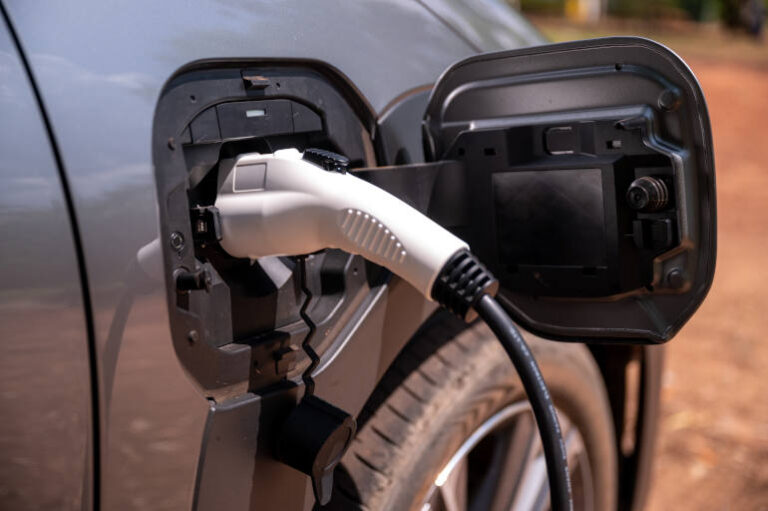Fleet News Group reached out to industry experts to understand how electric vehicle (EV) adoption will evolve in 2025. With regulatory changes, infrastructure expansion, and increasing vehicle options, the transition to EVs remains a complex issue for fleet managers. While full-scale adoption may still be a few years away, 2025 will see continued progress in integrating EVs into fleet operations.
Regulatory Influence on Fleet Decisions
New vehicle efficiency standards and carbon reporting laws are among the biggest factors influencing fleet purchasing decisions.
Rohan Martin, CEO at NALSPA, confirmed: “Fleets will need to review vehicle choices to ensure they align with the New Vehicle Efficiency Standards and cost requirements.” These regulations will push companies toward lower-emission vehicles, although the extent of their immediate impact is debated.
Andy Mulcaster, Chief Commercial Officer at SG Fleet, noted: “The standard should complement fleet purchasing decisions rather than directly influence them. An active vehicle replacement program should align with an organisation’s stated emission reduction objectives.” This suggests that while regulations set the direction, fleet managers will still make decisions based on operational needs.
Chris Noone, CEO at Carly, observed: “The impact will increase over time. Buying well and selling well will become more challenging.” This highlights the importance of monitoring vehicle depreciation and long-term cost-effectiveness.
EV Transition: Slow but Steady
Despite strong interest in EVs, most fleets are taking a measured approach to adoption.
Chris Forbes, General Manager Fleet at Kia Australia, stated: “I think EV transition will increase in 2025, but mass transition is still a couple of years away as most customers are needing to work through their individual charging requirements.” The readiness of charging infrastructure is a major hurdle slowing mass adoption.
Chris Noone echoed this sentiment: “Most fleets will probably dabble in 2025, but the tipping point is still a few years away.” While many companies are trialling EVs, full-scale transition remains a future objective.
Frank Agostino, CEO at Paywise, pointed out: “The biggest factor in 2025 will be education. Fleet Managers must address myths about grid limitations and ensure stakeholders understand charging options.” Addressing misinformation will be crucial for smoother EV integration.
Charging Infrastructure: A Key Challenge
The biggest obstacle to widespread EV adoption remains charging accessibility.
Mike Costello, Corporate Affairs Manager at Cox Automotive, noted: “Home charging is the most cost-effective option, but employers should also consider installing workplace chargers as a staff incentive.” Many fleet vehicles are taken home by employees, making home charging a critical factor.
Andy Mulcaster added: “Business fleets will likely use a mix of home, onsite, and public charging, with home charging leading the way.” Public charging infrastructure remains inconsistent, limiting its practicality as a primary charging solution.
Chris Forbes at Kia highlighted another potential solution: “Kerbside charging could provide a ‘near home’ charging solution for employees where At Home charging is not possible.” Such innovations will be necessary to overcome infrastructure limitations.
Hybrids as a Bridge to EV Adoption
With EV charging challenges persisting, hybrid vehicles remain a popular choice for fleets.
Rohan Martin observed: “Many fleets are holding off on BEV adoption due to charging issues, but hybrids continue to gain traction.” Hybrid vehicles provide a lower-emission alternative while avoiding some of the infrastructure challenges associated with full EVs.
Mike Costello pointed out another benefit: “Hybrid residual values are already strong, while EV resale values are still stabilising.” This makes hybrids a safer financial bet for fleet managers concerned about depreciation.
Expanding EV Market in 2025
As more affordable EV options enter the market, fleet adoption will gradually increase.
Giles Belcher, Chief Commercial Officer at MG Motor Australia, is optimistic: “With great choice, growing range, and reduced prices, fleets will continue to move towards EVs in 2025.” More models tailored to fleet needs will make EV adoption increasingly viable.
Mike Costello projected that “Cox Automotive forecasts EV sales growth this year, from 7.7% market share (passenger, SUV, and LCV) in 2024 to more than 10% this year, underpinned by the boom in Chinese products from the likes of BYD and MG.” These figures suggest steady growth but not yet mass transition.
Total Cost of Ownership Considerations
While upfront EV costs remain high, long-term financial benefits are becoming more evident.
Rohan Martin noted: “The FBT EV exemption is definitely assisting businesses with the higher price point of an EV, but more so for those cars that are driver assigned.” This incentive helps offset the cost difference between EVs and traditional vehicles.
However, as Chris Noone pointed out: “Residual values are an issue, with RV% on average lower than other vehicle types, but they still stack up in many cases on TCO.” While EV depreciation remains a concern, lower running costs help balance the equation.
Fleet Strategies for 2025
Fleet managers looking to integrate EVs successfully in 2025 must take a strategic approach:
- Pilot Programs: Testing EVs within fleet operations before committing to full-scale transition allows managers to identify practical challenges.
- Diverse Charging Strategies: A mix of home, onsite, and public charging solutions will be necessary to accommodate different operational needs.
- Hybrid Integration: Using hybrids as an interim solution can help fleets lower emissions while EV infrastructure catches up.
- Data-Driven Decision Making: Tracking total cost of ownership, residual values, and charging infrastructure availability will guide more effective fleet transitions.
Conclusion
While 2025 will not mark the mass transition to EVs, it will be another step forward in fleet electrification. Businesses will continue to pilot EVs, invest in charging solutions, and explore hybrid alternatives. The key to success will be balancing sustainability goals with cost-effectiveness and operational feasibility.
As Andy Mulcaster summarised: “We will see a continued slow but steady improvement throughout the year rather than a mass transition.” The shift to electric fleets is happening—but at a measured pace, ensuring long-term success rather than a rushed implementation.







